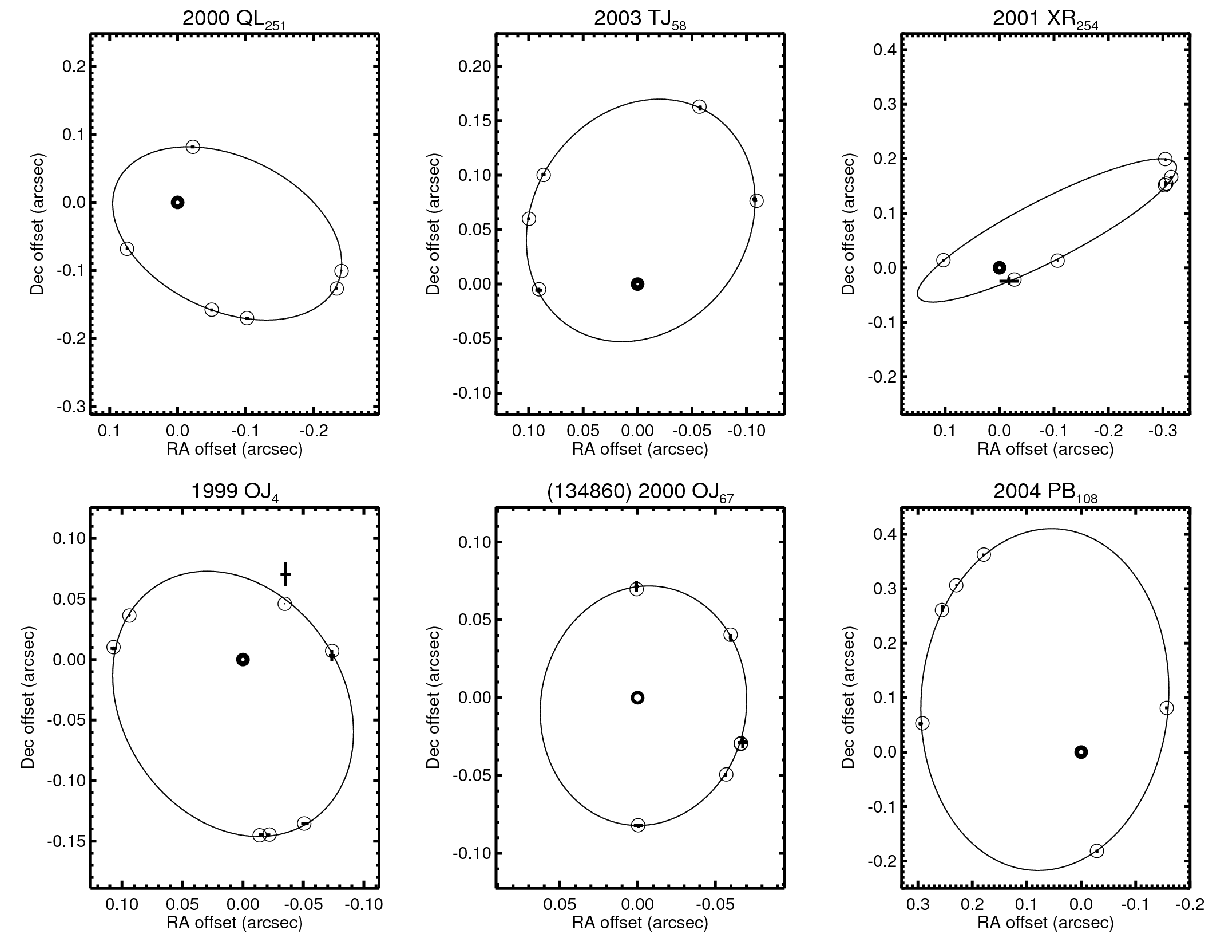
Mutual Orbits and Masses of Six Transneptunian Binaries
Published in 2009: Icarus 200, 627-635.
W.M. Grundy1, K.S. Noll2, M.W. Buie3, S.D. Benecchi2, D.C. Stephens4, and H.F. Levison3
(1) Lowell Observatory, Flagstaff AZ.
(2) Space Telescope Science Institute, Baltimore MD.
(3) Southwest Research Institute, Boulder CO.
(4) Brigham Young University, Provo UT.
Abstract
We present Hubble Space Telescope observations of six binary transneptunian systems: 2000 QL251, 2003 TJ58, 2001 XR254, 1999 OJ4, (134860) 2000 OJ67, and 2004 PB108. The mutual orbits of these systems are found to have periods ranging from 22 to 137 days, semimajor axes ranging from 2360 to 10500 km, and eccentricities ranging from 0.09 to 0.55. These orbital parameters enable estimation of system masses ranging from 0.2 to 9.7 × 1018 kg. For reasonable assumptions of bulk density (0.5 to 2.0 g cm-3), the masses can be combined with visible photometry to constrain sizes and albedos. The resulting albedos are consistent with an emerging picture of the dynamically "Cold" Classical sub-population having relatively high albedos, compared with comparably-sized objects on more dynamically excited orbits.

Fig. 3. Relative astrometry and orbit fits projected onto the sky plane. Circles at (0,0) represent the primary, with white centers scaled to the primary's estimated size. Small points with error bars, sometimes difficult to discern, show observed relative astrometry. Open circles with central dots indicate the best fit orbit solution's predicted positions at the observation times. Large ovals represent the sky plane projection of the best fit orbit at the mean time of the observations. Parallaxes from Earth and object motion around the Sun change the orbit's sky plane projection over time, causing the observed and model points to deviate slightly from these instantaneous projections, but not yet enough to distinguish between the two mirror solutions.